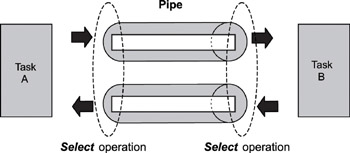
Master the fundamental concepts of real-time embedded system programming and jumpstart your embedded projects with effective design and implementation practices. This book bridges the gap between higher abstract modeling concepts and the lower-level programming aspects of embedded systems development. You gain a solid understanding of real-time embedded systems with detailed practical examples and industry wisdom on key concepts, design processes, and the available tools and methods.
Delve into the details of real-time programming so you can develop a working knowledge of the common design patterns and program structures of real-time operating systems (RTOS). The objects and services that are a part of most RTOS kernels are described and real-time system design is explored in detail. You learn how to decompose an application into units and how to combine these units with other objects and services to create standard building blocks. A rich set of ready-to-use, embedded design “building blocks” is also supplied to accelerate your development efforts and increase your productivity.
Experienced developers new to embedded systems and engineering or computer science students will both appreciate the careful balance between theory, illustrations, and practical discussions. Hard-won insights and experiences shed new light on application development, common design problems, and solutions in the embedded space. Technical managers active in software design reviews of real-time embedded systems will find this a valuable reference to the design and implementation phases.
Qing Li is a senior architect at Wind River Systems, Inc., and the lead architect of the company’s embedded IPv6 products. Qing holds four patents pending in the embedded kernel and networking protocol design areas. His 12+ years in engineering include expertise as a principal engineer designing and developing protocol stacks and embedded applications for the telecommunications and networks arena. Qing was one of a four-member Silicon Valley startup that designed and developed proprietary algorithms and applications for embedded biometric devices in the security industry.
Caroline Yao has more than 15 years of high tech experience ranging from development, project and product management, product marketing, business development, and strategic alliances. She is co-inventor of a pending patent and recently served as the director of partner solutions for Wind River Systems, Inc.
About the Authors
8.2.5 Typical Uses of Pipes
8.2.5 Typical Uses of Pipes
Because a pipe is a simple data channel, it is mainly used for task-to-task or ISR-to-task data transfer, as illustrated in Figure 8.1 and Figure 8.2. Another common use of pipes is for inter-task synchronization.
Inter-task synchronization can be made asynchronous for both tasks by using the select operation.
In Figure 8.6, task A and task B open two pipes for inter-task communication. The first pipe is opened for data transfer from task A to task B. The second pipe is opened for acknowledgement (another data transfer) from task B to task A. Both tasks issue the select operation on the pipes. Task A can wait asynchronously for the data pipe to become writeable (task B has read some data from the pipe). That is, task A can issue a non-blocking call to write to the pipe and perform other operations until the pipe becomes writeable. Task A can also wait asynchronously for the arrival of the transfer acknowledgement from task B on the other pipe. Similarly, task B can wait asynchronously for the arrival of data on the data pipe and wait for the other pipe to become writeable before sending the transfer acknowledgement.
Figure 8.6: Using pipes for inter-task synchronization.





